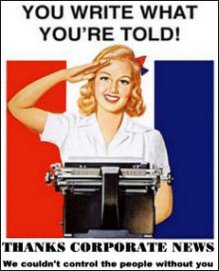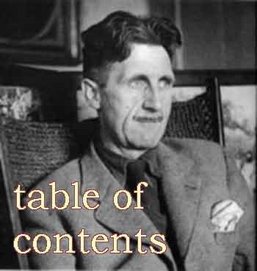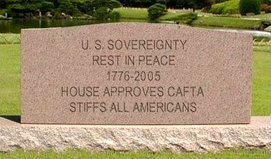The first movie mentioned in this list "Madison" completed in 2005, and starred Jim Cazizal (I know I botched the spelling of his name-he played Jesus in the "Passion of Christ). It is based upon the Madison Regatta, which is the annual hydorplane boat race held fourth of July weekend in Madison, IN. Ms. Madison won the cup in 2001, I believe. The rest of what follows is taken is copied and pasted from the Madison Courier. Kat, you can probably call the library to see if you can get a VHS of the movie "The Town" , all highlighted. I told you I'd find it! By Beebee
“Madison” is not the first dramatic film ever made here — or the only time the beauty of this historic town has been put on film.
Six times Madison has been the subject or the setting for a movie that shows off its natural beauty, its architectural significance, its residents, or all three.
“Some Came Running”
The movie version of James Jones’ sequel to his best-selling novel “From Here to Eternity” is known at least by name to many Madisonians. It’s a late-1950s melodrama about drunken cynicism, hypocrisy and the frustration of an occasionally-published writer who thinks he is washed up, but who really just needs to love and to be loved. The title comes from an early passage in the book about writer Dave Hirsch’s reception when he returns to his hometown: “Some came running, some turned away ...”
When MGM decided in early 1958 to film “Some Came Running,” it sought a Midwestern town suitable for framing as Parkman, Indiana, scene of the story. Madison was judged to fit the bill perfectly. Frank Sinatra, a very young Shirley MacLaine and Dean Martin (trying to step out of the shadow of Jerry Lewis) were signed to star in the picture, the story of an alcoholic writer just out of the Army who is bringing his bitterness and cynicism about everything back to his hometown.
MacLaine made a number of friends in Madison during the cast and crew’s three weeks here filming exteriors. Martin was judged afterward to have behaved like a gentleman toward the locals. But Sinatra left a bad taste in the mouths of many Madisonians, with reports of his having ripped a telephone out of the wall at the old Hillside Hotel (now the Hillside Inn) and of his punching out an inoffensive hotel desk clerk.
The tensions don’t show in the movie, which features some fine acting and was nominated for five Academy Awards, but won none.
While the film version of Jones’ novel is the best-known cinematic rendering of Madison’s scenery, there was another dramatic movie filmed here in more modern times, plus at least four other, documentary-type films have featured our city as their topic.
“The Living Years”
Madisonian Chris Allen’s charming little drama “The Living Years” was filmed in his hometown of Madison in 1995. The movie tells the story of a young man and woman, their romance and marriage, and her tragic death. The climactic moments in the film concerned the reactions of the bereaved husband — played by Allen himself — to the loss of the woman he loved, played by fellow Madisonian Kelly Campbell.
A number of other local residents who were amateur actors appeared in leading and supporting roles in the film also.
Allen decided to write the screenplay, then try to turn it into a film, in memory of a boyhood friend who died in a traffic accident while both were students at Madison Consolidated High School. He formed RACSO Motion Pictures to market the film, finally obtaining financial backing. It was premiered at the Sherman Auditorium at MCHS, Allen’s alma mater.
Allen moved to Indianapolis in 1999, and is continuing his career as a writer and director of motion pictures that tell of the dramatic impact of events on everyday people.
"Madison in the ‘30s”
The earliest known film about Madison was made during 1936-38 by a group of Indiana University students. Their class assignment: Film a typical Indiana town, showing its residents, its businesses, civic activities, schools, and the like. Merchants were to be charged a small fee to have their businesses shown in the film, with that money going toward production costs; then, when it was ready, the movie would be shown at the local theater.
Filming went fine in Madison until the time came to show the silent, 16-millimeter movie at the Ohio Theater. The Ohio’s projector was a 35-millimeter, and so it couldn’t be used to show the film. What to do? Harold Lohrig was one of the first people around Madison to take home movies of his family and others, and he had shot some of the footage in the “Madison in the ‘30s” movie. Lohrig had one of the few 16-millimeter projectors in town, and he was persuaded to bring it to the theater and show the film twice. The viewers were disappointed at the small size of the images, and the project was abandoned. The students made a present of the single print to Lohrig, who put it away in his closet for safekeeping.
Many years later, one of Lohrig’s sons, Graham, concerned that the film would start to deteriorate, began checking to see if someone would agree to have it transferred to video to preserve it. The Cornerstone Preservation Society agreed to do so, thus ensuring that the irreplaceable film could be seen by future generations.
Prominent Madisonians shown in the old black-and-white movie include high school band director Harold Rothert; grocer Wilbur Wehner and his wife Fern; John Knoebel, father of the present-day John and Joe Knoebel; Bill Hertz, father of Bill Jr., who operates Hertz Shoes; a then-teenage Charles “Shotgun” Harrod, father of Charles “Pete” Harrod, showing off with a cigarette and a milkshake in front of Rogers Drug Store. The downtown itself and its landmarks have changed remarkably little. The courthouse, the Masonic building, the two downtown schools, the churches, the four downtown firehouses, all look familiar.
“The Town”
During World War II, the War Department was seeking a “typical” Midwestern town where it could shoot a morale-boosting film to help the war effort. “The Town” chosen was Madison.
As in the 1930s movie, many scenes of Madison are immediately recognizable and little-changed from that day to this. People in this film include the Tony Dattilo Sr. family gathered around the dinner table. The narrator gives the family name the traditional Italian pronunciation: “dah TEE loh.”
Judge Harry Nichols and attorney Joe Cooper, who was the town’s most prominent lawyer in those days, appear in a trial at the courthouse. The narrator states that Nichols is friendly to Cooper “despite political attacks he made on the judge in the last election campaign.” Not likely; they were both Republicans.
Footage shot inside The Madison Courier plant shows the late publisher and owner Michael E. Garber looking over the finished product.
“Remembering Madison, 1961”
“Remembering Madison, 1961” shows numerous local schoolchildren of the time who are still alive and well in their 50s or 60s.
The old film, originally made by Associated Film Productions as part of its “This Is Your City” series, was re-issued with a wraparound made in 1990, the 30th anniversary of the founding of Historic Madison Inc. John Galvin, then-president of HMI, and other prominent citizens of the time, including Perin Scott and the late Dotti Reindollar, narrated the 1990 wraparound for the black-and-white 1961 film.
Footage was shot at local banks, the schools, Madison Cubs games, and the like. For instance, Michael Garber’s successor as publisher, his son-in-law Don R. Wallis, and Garber’s grandson who was later editor of The Madison Courier, Mike Neal, appear in two scenes. Also shown are various business leaders and other “movers and shakers” of Madison of 1961.
“Madison: A Story-book City”
This 1988 documentary about Madison, made by King’s Daughters’ Hospital in cooperation with the city of Madison and the Madison-Jefferson County Public Library, is short — just slightly over 10 minutes — but it manages to pack a lot of information into those 10 minutes.
The narrator gives the viewer a quick trip through Madison’s history, illustrated by old photos and woodcuts, revealing such interesting bits of information as the fact that Madison was the greatest “porkopolis” or pork-packing center in the country, and that many of the grandiose old buildings still standing were built by early Madisonians with an eye to the city’s becoming Indiana’s capital, which never happened.
The narrator also relates that one of Madison’s distinctions, being the starting point for the first railroad west of the Appalachians, was a two-edged sword: It began the decline of pork packing, as shipment by river was no longer as necessary due to the trains.
A feature that unites four of the five films is the fact that the opening scenes of all but “Remembering Madison, 1961” feature panoramic views of the city from the Kentucky hills, displaying the Ohio River and the Madison-Milton bridge. One of these was the “Some Came Running” opening scene, shot inside a White Star bus driven by the late Bill Lockridge (a Madisonian who really was a bus driver) bringing Sinatra and MacLaine to Parkman.
All the old movies mentioned here are available on VHS at the Madison-Jefferson County Public Library.
By Wayne Engle
The Madison Courier
Subscribe to:
Post Comments (Atom)









1 comment:
Beebee:
Thanks for the research. I thought I'd gone through all of Archive.org but I went on Dogpile to find "Office of War Information Madison WWII" and in the Prelinger Archive there is the movie in question. I can see if the Sixties movie is there.
The WWII movie can be downloaded from Archive.org.
Thanks
KAT
Post a Comment